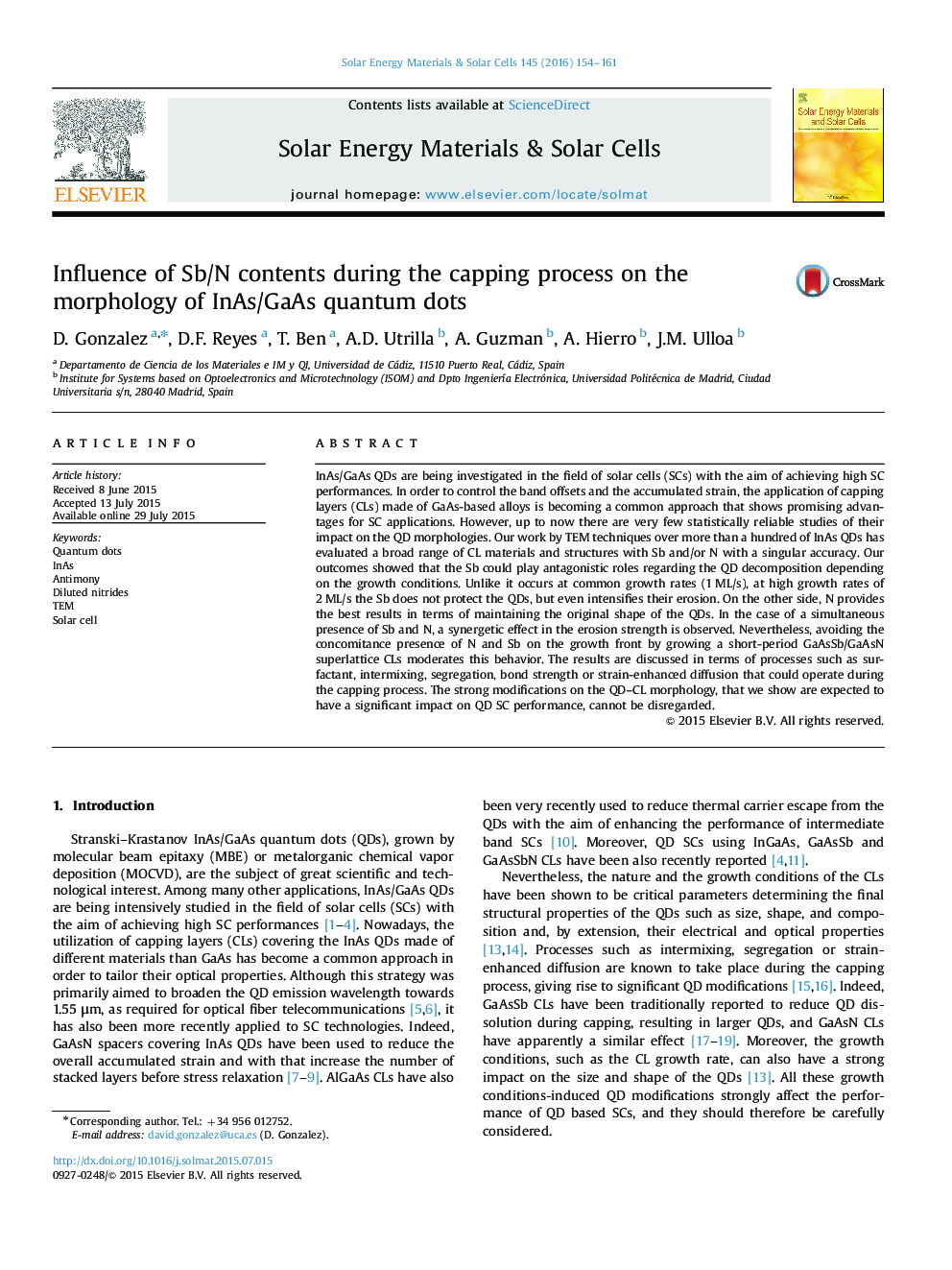| Article ID | Journal | Published Year | Pages | File Type |
|---|---|---|---|---|
| 77667 | Solar Energy Materials and Solar Cells | 2016 | 8 Pages |
•Multistack of InAs/GaAs QDs for solar cells were analyzed by TEM related techniques.•GaAs(SbN) capping layers have huge effects on the QD structure and optical properties.•Size statistical data were complemented with strain and compositional analyses.•The Sb and N roles in the CL are strongly conditioned by the growth parameters.•A model for the QD erosion phenomenon evidenced the influence of these parameters.
InAs/GaAs QDs are being investigated in the field of solar cells (SCs) with the aim of achieving high SC performances. In order to control the band offsets and the accumulated strain, the application of capping layers (CLs) made of GaAs-based alloys is becoming a common approach that shows promising advantages for SC applications. However, up to now there are very few statistically reliable studies of their impact on the QD morphologies. Our work by TEM techniques over more than a hundred of InAs QDs has evaluated a broad range of CL materials and structures with Sb and/or N with a singular accuracy. Our outcomes showed that the Sb could play antagonistic roles regarding the QD decomposition depending on the growth conditions. Unlike it occurs at common growth rates (1 ML/s), at high growth rates of 2 ML/s the Sb does not protect the QDs, but even intensifies their erosion. On the other side, N provides the best results in terms of maintaining the original shape of the QDs. In the case of a simultaneous presence of Sb and N, a synergetic effect in the erosion strength is observed. Nevertheless, avoiding the concomitance presence of N and Sb on the growth front by growing a short-period GaAsSb/GaAsN superlattice CLs moderates this behavior. The results are discussed in terms of processes such as surfactant, intermixing, segregation, bond strength or strain-enhanced diffusion that could operate during the capping process. The strong modifications on the QD–CL morphology, that we show are expected to have a significant impact on QD SC performance, cannot be disregarded.
